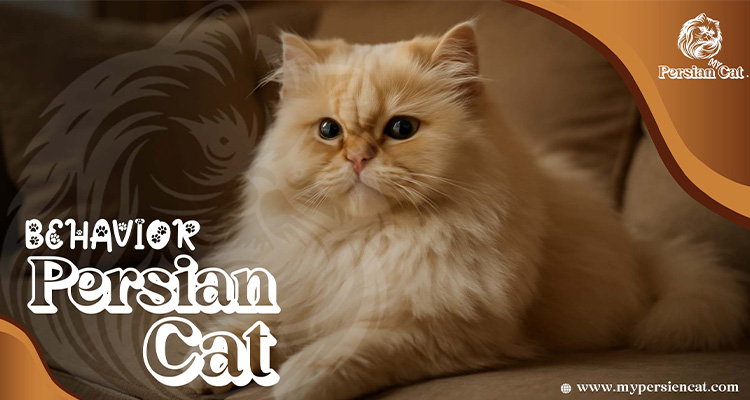Introduction
Have you ever looked into those big, round eyes of a Persian cat and wondered what’s going on in that fluffy little head? As someone who’s shared a home (and a couch!) with more than one Persian longhair,
I can tell you—they’re as fascinating as they are beautiful. Known as the royal Iran cat, their calm charm hides a whole world of unique traits. Let’s explore Persian cat behavior so you can bond better with your furry friend
and understand what makes them tick. Whether you’re a first-time cat parent or just curious about Persian cats’ behavior, this guide has you covered.
Meet the Persian Cat
When you think of a Persian cat, you might imagine its long, soft fur or those big, round eyes. These cats, often called “Iran cats” because they come from Persia, are loved around the world for their beauty and calm nature. Persian cats are not only stunning to look at but also have unique personalities. Let’s dive into what makes them so special.
Persian cats come in many types, each with its own look and personality. The Traditional/Doll-faced Persian is the classic one, with a round face and full cheeks. They’re gentle and affectionate. The Peke-faced Persian has a flatter face, giving it a grumpy look, but they’re still loving. The Himalayan Persian, a mix of Persian and Siamese, has a color pattern and is more talkative. The Chinchilla Persian has a shiny, sparkling coat that glows in the light, and the Exotic Shorthair Persian has a shorter coat, perfect for those who like the Persian look but prefer less grooming.
No matter which type you have, all Persian cats share similar behaviors. They’re calm, friendly, and love spending time with their owners. While each type might have a few differences, they all have one thing in common—Persian cats’ behavior makes them perfect companions for many homes. Whether you have a Himalayan Persian or a Persian Siamese mix, knowing what makes them tick helps you form a stronger bond.
All Persian cats, no matter their type, share a unique charm. Their calm and loving nature makes them stand out from other breeds. Understanding their behavior will help you connect with your Persian cat and make your home a happy place for both of you.

Typical Persian Cat Behavior Characteristics
Persian cat behavior is calm, quiet, and full of love. These cats enjoy peace. They don’t like loud sounds or too much chaos. They would rather nap on the couch than race around the house.
Persian cats’ personality and behavior are perfect for quiet homes. They like soft voices, gentle pets, and a cozy place to rest. If your home is calm, they will feel safe and happy.
These cats are not very active. That doesn’t mean they are lazy. It just means they move slowly and rest a lot. They may play for a few minutes, then go right back to sleep.
There’s a small difference between males and females. Male Persian cat behavior can be more clingy. They may follow you everywhere and ask for cuddles. Females are sweet too, but they often like more space. They come to you when they want love.
All in all, Persian cats’ behavior is steady and sweet. They love their people and enjoy daily routines. They may not meow much, but their eyes and purrs say a lot.
Once you learn about Persian cats’ behavior, you’ll see how special they are. They show love in quiet ways—and that’s what makes them so easy to adore.
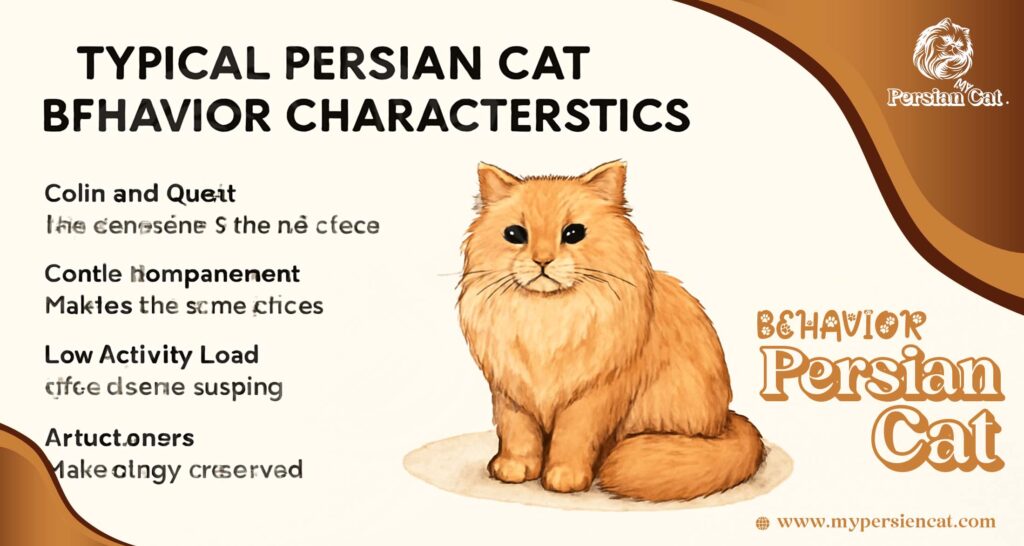
Special and Unique Behaviors of Persian Cats
Persian cats may be calm, but they sure have funny habits. One of my cats greets me at the door every day. It’s like she knows I’ve been gone and wants to say hi. This is one of the sweetest Persian cat special behaviors.
They also purr a lot. Not just when they get pets, but even when they’re resting near you. That soft sound means they feel safe. It’s one of the ways Persian cats’ behavior shows love.
Some cats do odd things, too. One of mine liked to sleep in the sink! Another would stare at the wall like it was a movie. Don’t worry—this is just a part of Persian cat strange behavior. These cats have their own way of doing things.
Understanding Persian cat behavior helps you know what’s normal and what’s just silly. They have their own style, and that’s what makes them special.
From soft purrs to weird naps, these cats are full of charm. Persian cats’ behavior is calm, sweet, and full of little surprises.

Common Persian Cat Behavior Problems
Even calm Persian cats can have some problems. But don’t worry. Most issues are easy to fix once you understand them.
One common problem is with the litter box. Some Persian cats stop using it. This usually means the box is dirty, the litter smells strong, or it is in a noisy place. Clean the box often and keep it quiet. This usually helps.
At night, some Persian cats can be restless. They might cry or walk around. This can happen if they are bored or confused about sleep times. Try playing with them before bed. Give them a warm, quiet spot to sleep. This can make them calm.
Sometimes, cats want attention and act out. They might knock things over or scratch furniture. This is their way of asking for love or play. Give them toys and praise when they behave well. Help them learn good habits gently.
Knowing Persian cat behavior helps you understand why they act this way. They are not being naughty. They just need care and love. When you give that, they will be happy and calm again.

How Environment Affects Persian Cats’ Behavior
Let me share a little story. When I first brought home my Persian longhair, Bella, I thought she would be fine in my busy home. She seemed so calm! But soon, I saw her hiding under the bed, wide-eyed and quiet. That’s when I learned something big about Persian cat behavior — these cats need peace to feel safe.
Persian cats’ personality and behavior change with their surroundings. They do best in calm, quiet spaces. Loud noises, too many people, or busy rooms can stress them out. You might see Persian cat behavior problems at night, like pacing or crying. Some cats may stop eating or hide away when they feel scared.
If you live in a lively home, don’t worry! You can still help your cat feel safe. Make a quiet spot just for them. This can be a soft bed in a corner or a cozy window perch. My Bella loves her sunny spot by the window, where she watches the birds and naps in peace. A peaceful home supports positive Persian cats’ behavior and keeps them happy.
Different types of Persian cats, like the Himalayan Persian cat or the Persian Siamese cat mix, may handle noise a little better. For example, Siamese Persian mix cat behavior is often more playful and chatty. But even these cats need a calm space to relax.
Understanding Persian cat behavior means knowing what makes them feel safe. Think of them like gentle flowers — they open up best in the right place. With love, quiet, and care, you will see your Persian cat’s sweet side shine.
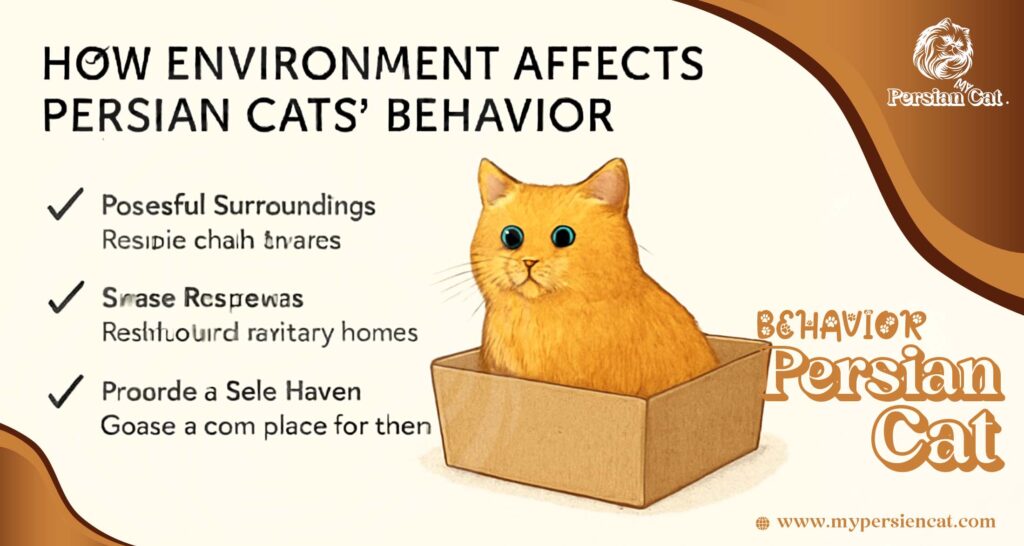
Play, Activity, and Interaction Needs
You might think Persian cats only care about naps and soft pillows — and you’re right, most of the time. But here’s a fun secret: even the calmest Persian longhair will surprise you with short bursts of play.
My Persian, Bella, can lounge like a queen all day. But the moment I pick up a teaser wand or a catnip mouse, she jumps to life. These short, happy playtimes are key to her joy. Persian cat behavior may look lazy, but deep down, they love a little gentle fun — just in small, quiet bits.
If you have a Himalayan Persian cat, behavior might be a little different. Himalayan mixes and Persian Siamese cat types often show the chatty, active Siamese side. I once met a Siamese Persian mix cat named Luna who would “talk” to her owner while playing with toy balls. She was much more active and loud than Bella. This shows how the types of Persian cats can vary in energy.
Remember, playtime is not just fun — it shapes the personality and behavior of Persian cats. It keeps their minds sharp, stops boredom, and helps you bond. Even though the average Persian cat lifespan is 12–14 years, regular play helps them stay young.
So, the next time you see your Persian cat stretched out like a fluffy rug, don’t assume they’re done for the day. Wave a feather toy or roll a soft ball their way. You’ll see that under all that royal calm, there’s still a spark of kitten-like fun — and that’s one of the sweetest Persian cat special behaviors of all.
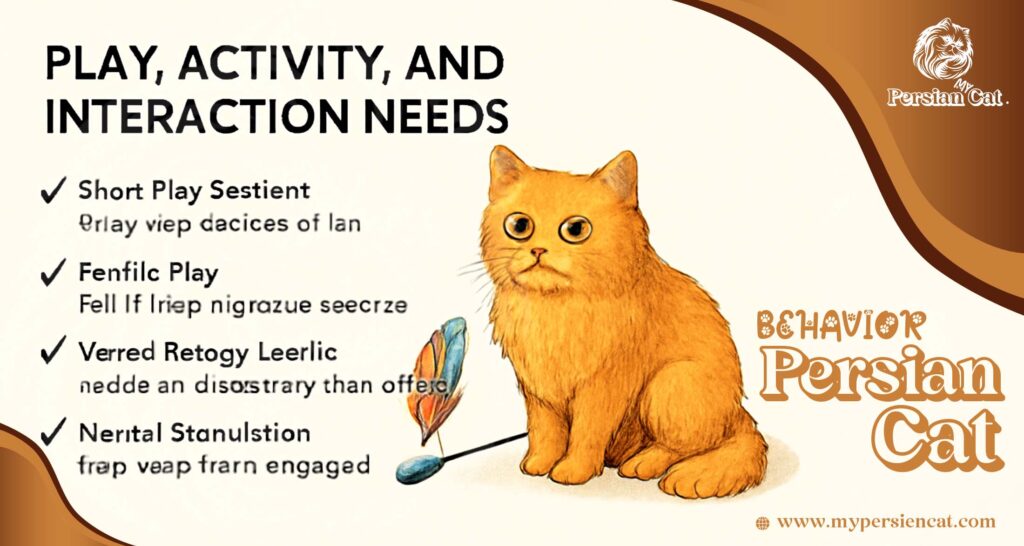
Training Tips for Better Behavior
Training a Persian cat is simple when you are patient and kind. These cats like soft voices and gentle hands. They respond well to love.
Start with the litter box. If your cat has trouble, check if the box is clean. Also, put it in a quiet spot. Persian cats usually use the litter box more if it is fresh and calm. If your cat avoids the box, try cleaning it more or changing the litter.
Next, help your cat enjoy playtime and time with you. Some Persian cats are shy. Let them come to you. Use a teaser wand or a soft toy to invite play. Just a few minutes each day can make your cat happy.
If your cat scratches the couch or knocks things down, don’t scold. Show them a better choice. Give them a scratching post or a toy. When they use it, praise them with a soft voice or gentle petting. This is called positive reinforcement. It helps your cat learn that good behavior is rewarded.
Remember, Persian cats are gentle by nature. They don’t need harsh training. They need steady love, clear guidance, and a calm place. With care and time, you will help your cat grow happy and strong. You will also build a deeper bond.

Health and Its Impact on Behavior
Have you noticed a change in your Persian cat’s behavior and wondered why? Sometimes, it’s not just their mood. Health issues can affect how they act.
Dental problems are common for Persian cats. Their flat faces can make it hard to care for their teeth. If your cat seems grumpy, isn’t eating, or is more tired than usual, it might be due to dental pain. Just like us, they feel discomfort when their teeth or gums hurt. Regular vet visits and teeth cleanings can help keep this from happening.
Eye issues are another concern for Persian cats. Their big, round eyes are beautiful, but they can sometimes lead to problems, like tear production or infections. If your cat’s eyes seem irritated, or they are squinting and acting different, it could be an eye problem. When this happens, their behavior might change, and they may become more withdrawn. Regular eye care is essential to keep their eyes healthy.
Breathing issues are also common, especially for flat-faced Persians. Their short noses can make it harder to breathe. If you notice your cat having trouble breathing or making strange noises while resting, it might be a sign of breathing problems. Keeping them cool and in a calm environment can help them feel better and reduce stress.
By keeping up with your Persian cat’s health, you can help them stay happy and calm. Healthy cats behave better and show their loving, sweet side. If something feels off, always check with a vet. Good health is the key to good behavior.
Taking care of your cat’s health means they can keep being the loving companions you know and enjoy. Healthy cats make happy homes.
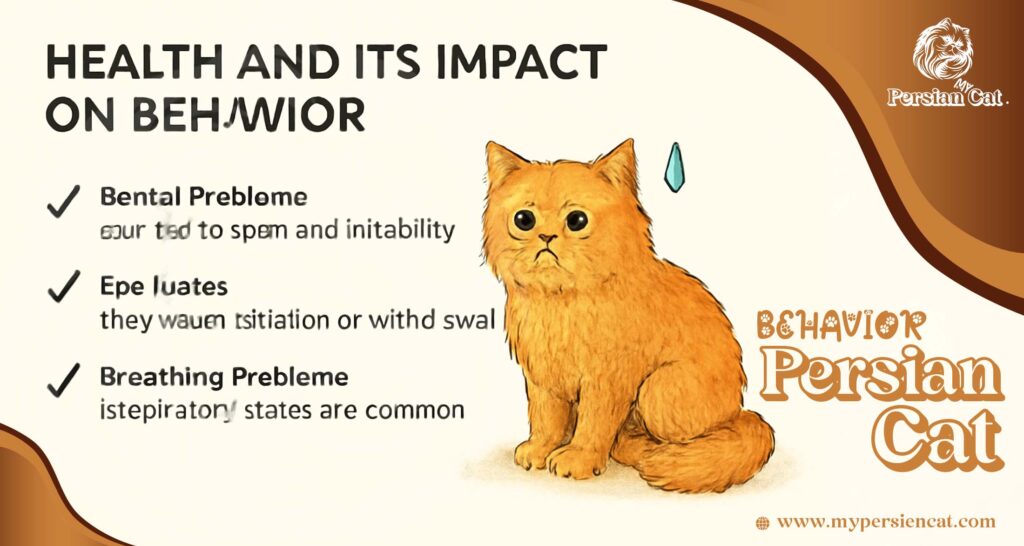
Understanding Your Persian Over Time
As your Persian cat gets older, their behavior will change in small but noticeable ways. Like us, they age, and with age comes some new habits. When they’re young, they’re often playful and active, but as they grow older, they may prefer more relaxation and quiet time. This is a normal part of getting older.
The average Persian cat lifespan is about 12–14 years. As they age, their needs change. Young Persians are usually curious and energetic, but older cats tend to enjoy resting more. This change is natural, and it’s important to recognize these shifts and adjust to their new needs.
Older Persian cats may also deal with health issues, like joint pain or arthritis, that make them slower and less active. If your Persian is slowing down, it might be because of physical discomfort, not just aging. You can help by providing them with a soft, comfortable bed, joint supplements, and regular vet visits.
To keep your senior Persian happy, give them gentle, consistent attention. They may still want to play, but it will be less intense and shorter. They may also want to be near you more often, and their calm nature will likely increase. Be patient and give them the space to relax, while continuing to offer the love and care they need.
As your Persian cat ages, their behavior will adapt, but their love for you will remain the same. By understanding these changes, you’ll help your Persian enjoy their golden years with comfort and joy.

Should You Adopt a Persian Cat?
Thinking about adopting a Persian cat? Here’s what you should know about their personality and lifestyle. Persian cats are gentle and calm, making them great companions for people who enjoy a peaceful home. They love cuddling and relaxing, and they don’t require much excitement or energy. However, they do have specific needs that you should be ready to meet.
Personality and Lifestyle Fit
Persians are known for their sweet, laid-back nature. They are perfect for people who enjoy a quiet and relaxed lifestyle. If you like to spend time reading or lounging at home, a Persian cat could be the perfect companion. They love napping and sitting with you, enjoying the calm of your home.
However, keep in mind that Persian cats prefer a serene environment. They aren’t as active as some other breeds and enjoy short bursts of play rather than long, energetic sessions. If your home is loud or busy, they might get stressed. Understanding Persian cat behavior will help you see if they are the right fit for your lifestyle. If your home is peaceful, a Persian will thrive.
Quick Checklist for New Owners
- Quiet Environment: Persian cats do best in calm homes.
- Regular Grooming: Their long fur needs regular care.
- Gentle Attention: They love attention but are sensitive to rough handling.
- Health Care: They may need extra attention for their eyes and breathing issues due to their facial structure.
Understanding Persian Cats’ Behavior
By knowing Persian cat behavior, you can decide if they’re right for you. These cats are best for quiet homes, but they do need regular grooming and a calm environment. They may not be the most playful or energetic cats, but they are loving and loyal companions who enjoy relaxing with you.
Before adopting a Persian, make sure you can provide a peaceful space and time for grooming. If you can, they will bring joy and comfort to your home for years to come.
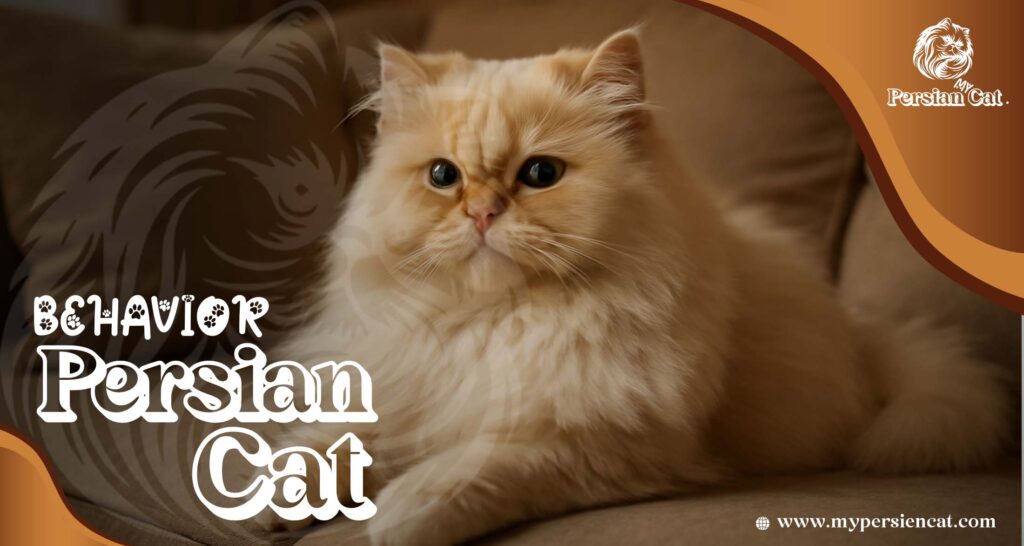
Final Thoughts
Every Persian cat is special. Each one has its own look and personality. Whether you already have a Persian or want one, now you know why they’re so loved. They are calm, sweet, and great pets for the right home.
To bond with your cat, it helps to know their behavior. Persians enjoy peace and quiet. They also need regular grooming. When you know what they like, you can care for them better.
All Persians are a bit different. But with love and patience, they will feel happy and safe. Now you can spot their habits and build a strong bond.
Want to learn more? Check out our guides on Himalayan vs. Persian cats, caring for long-haired breeds, and more about Persian cat behavior.
Frequently Asked Questions (FAQs) about Persian Cat Behavior
- What is the personality of a Persian cat like?
Persian cats are calm, quiet, and loving. They enjoy peace and like to relax. They are great pets for gentle homes. - What are some common behaviors of Persian cats?
They love to nap, cuddle, and stay in calm places. They often purr to show love and feel safe when things are quiet. - How does a Persian cat act compared to other breeds?
Persians are calmer than most cats. They don’t jump around much and like soft voices. They enjoy slow, quiet days. - Do male Persian cats act differently from females?
Yes. Males may follow you more and want to stay close. Females are often more on their own. But both are sweet and love attention. - How can I fix common Persian cat behavior problems?
If your cat pees outside the box or won’t sleep, try keeping the litter box clean. Give them a quiet place to rest. - How does the home affect Persian cat behavior?
Loud sounds or a busy space can scare them. They like calm rooms and soft sounds. A quiet home helps them stay happy. - Do Persian cats like to play?
Yes! They like short, slow games. Try soft toys or feather wands. But they won’t play as much as other cats. - Can I train my Persian cat?
You can! Use treats and kind words. Be patient and gentle. They learn best when they feel safe and loved. - Do health problems change how a Persian cat acts?
Yes. If your cat is sick, they may act grumpy or sleep more. Get checkups to keep them feeling good and happy. - How do Persian cats change as they grow older?
Older Persians slow down and rest more. They may need soft beds and extra love. Keep them comfy as they age.
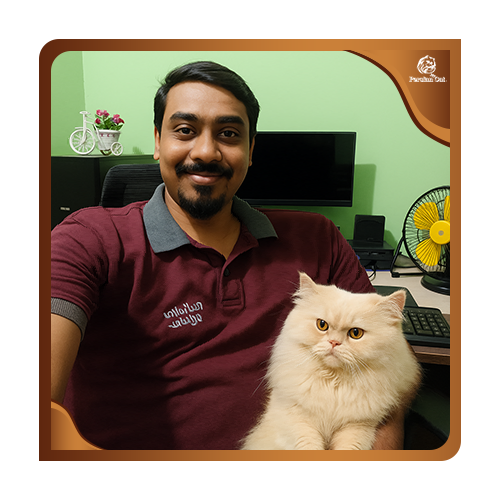
Authorize Advisor
Yasin Ahmed Tusher
I Have Five Years of Experience With Persian Cat
In that time, I have learned a lot about how to care for them. Persian cats have long, soft fur, so they need to be brushed often. I know how to brush and bathe them to keep their coats clean and smooth.
I also understand what they like to eat and how to keep them healthy. Persian cats are calm and loving. I enjoy spending time with them and making sure they feel happy and safe.
I can give them medicine if needed and watch for signs of illness. I know how to care for both kittens and older cats. Taking care of Persian cats is something I do with love and care every day.
Phone : 01978040328
Email : info@mypersiencat.com
Persian Behavior Persian Behavior Persian Behavior Persian Behavior Persian Behavior Persian Behavior Persian Behavior Persian Behavior Persian Behavior Persian Behavior Persian Behavior Persian Behavior Persian Behavior
Persian Behavior Persian Behavior Persian Behavior Persian Behavior Persian Behavior Persian Behavior Persian Behavior Persian Behavior Persian Behavior Persian Behavior Persian Behavior Persian Behavior Persian Behavior Persian Behavior Persian Behavior Persian Behavior Persian Behavior Persian Behavior Persian Behavior Persian Behavior

